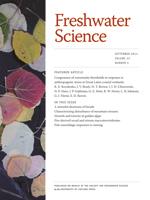FASTTRACKED (1)
PERSPECTIVES (2)
ARTICLES (25)
ERRATUM (1)

The Lotic Intersite Nitrogen Experiments: an example of successful ecological research collaboration
Leaves and litterbugs: how litter quality affects amphipod life-history and sexually selected traits
No abstract available

